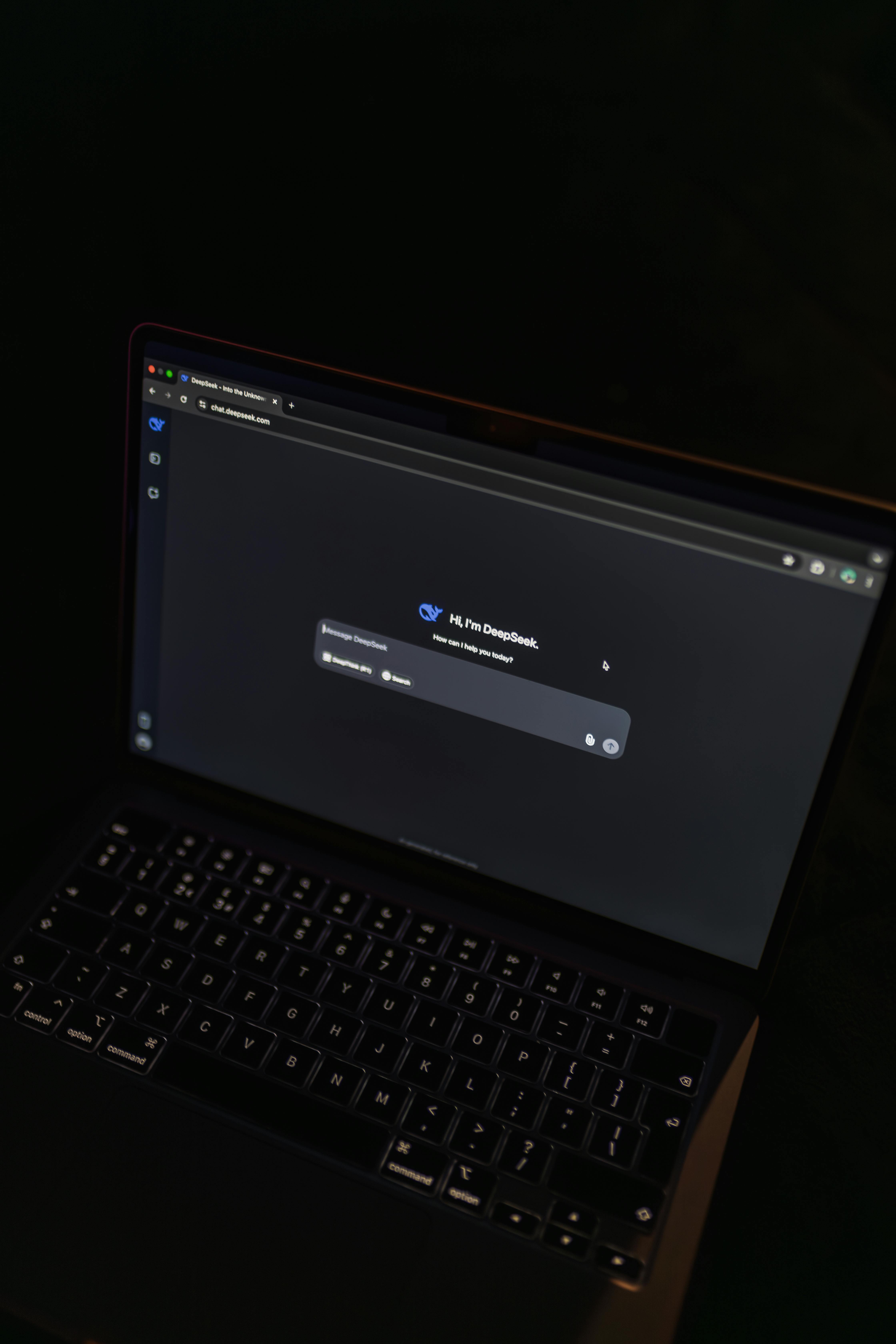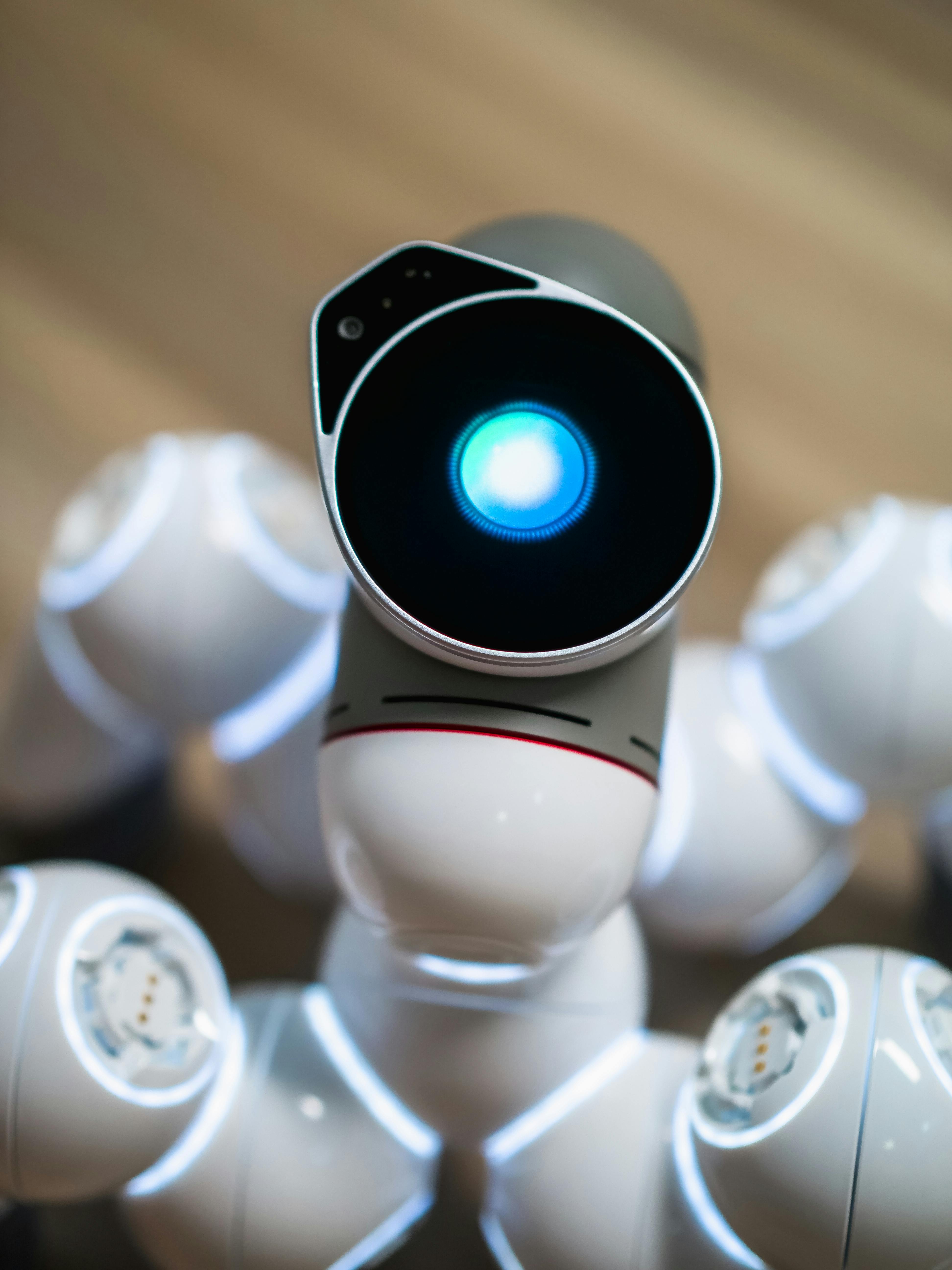Japan’s Proven AI Adoption: Enterprise Strategies for Advanced Machine Learning Success
Here’s a scenario that’s played out in far more boardrooms than you might expect: a global enterprise CIO, fired up after yet another “AI in Asia” trend presentation, returns home and dives into implementing machine learning with a gusto that’s almost contagious. Six months later—nobody’s using the chatbot, that predictive maintenance pilot stalled, and dashboards are gathering virtual dust. Sound familiar? What I’ve consistently found, especially after years working inside and alongside both Western and Japanese enterprises, is that something radically different is at play in Japan. Not a magical algorithm, but a playbook—a philosophy—anchored in discipline, cultural nuance, and relentless practicality.
Let me pause here. When people think “Japan + AI,” they might imagine robots bowing in hotels, or perhaps Toyota’s world-class automation lines. But having watched these companies (and more modest mid-tier manufacturers, to be honest) up close, I can tell you Japan’s breakthroughs aren’t just about robots gliding across tatami mats. They’re about taking the thorniest problems—legacy systems, aging workforces, global competition—and systematically, sometimes stubbornly, baking in AI so deeply that it sticks. In this deep dive, I’ll share what really struck me about Japan’s advanced AI and ML strategies—the frameworks, the cultural moves, the real-world mistakes—and why so many global enterprises are hustling to learn from Japan’s remarkable AI journey.
The Japanese Enterprise AI Landscape: Quiet Leaders, Real Results
Honestly, I used to underestimate Japan’s influence in the global AI race. Maybe it’s because Japanese innovation rarely arrives with fanfare—no bombastic hackathons, no overhyped TED Talks. In fact, Japan’s approach is notably reserved, emphasizing discipline over demo day drama. But if you take a closer look, especially inside Japan’s manufacturing, automotive, banking, and logistics giants, what you find is something quietly astonishing: enterprise-level AI integration moving at a scale that few outside of Japan truly realize1.
Let me clarify something here: Japan does not (and, frankly, cannot) rely on headline-grabbing Silicon Valley imports. The majority of AI deployments happen on top of labyrinthine legacy systems, overseen by teams with decades—yes, decades—of institutional memory. What I should have mentioned first is that this marriage of old and new, slow and fast, is not a bug. It’s Japan’s feature. The result? AI that not only works, but lasts, quietly transforming core processes long after most “innovative” pilots have fizzled elsewhere2.
Japan is home to more than 500 industrial robot manufacturers—a staggering fact that’s directly shaped its approach to machine learning optimization not just in manufacturing, but logistics and even healthcare. This robotic backbone has set the stage for advanced AI integration at scale, from Tokyo to Osaka and far beyond3.
What gets me—in all my client engagements, internal workshops, and even after-hours ramen shop conversations with Japanese engineers—is that this is not a story of quick wins. Instead, it’s about the long game. That’s probably why, as of last year, the percentage of Japanese enterprises with active, scaled AI/ML deployments easily eclipses the global average: over 43% vs. just 27% for major US and European corporations4.
الرؤية الرئيسية
Japan’s secret is not abundant VC funding or an endless supply of PhDs—though both help. It’s a deep-rooted organisational patience, a willingness to fail quietly, iterate relentlessly, and, most of all, integrate AI into the absolute fabric of everyday business processes. That discipline? It’s as much cultural as it is technical.
Five Pillars: What Sets Japan’s AI Adoption Apart?
Now, everyone asks: what is it that Japanese firms actually do differently? Over time—much of it informed by my own cross-cultural learning curve—I’ve boiled it down to five core pillars. These came up over and over during site visits from Sapporo to Nagoya, and in project retrospectives where I watched even seasoned consultants nod in agreement, some with a hint of professional jealousy:
- Process-First, Hype-Later: AI is always mapped to a concrete, business-critical process long before algorithms are unleashed.
- Kaizen Culture Anchors: Machine learning feeds off Japan’s famous kaizen (continuous improvement) framework—AI optimizes process, kaizen then optimizes AI, round after round.
- Governance Embedded: Every AI rollout comes with governance checklists nailed down in policy, not perpetually “under review.”
- Data Grounded in Reality: Japanese teams invest بشكل كبير in data cleaning because they know “legacy” is not a dirty word (it’s a business asset).
- People, Not Algorithms, Drive Adoption: Cross-functional teams—engineers and end-user veterans together—are the norm, not the exception.
On second thought, maybe there’s a sixth pillar: relentless humility. Or perhaps it’s just that Japanese engineers will never brag about something half-baked. Either way, these are not abstract “best practices” but living, breathing realities I’ve seen play out—sometimes painfully, occasionally brilliantly—in Japan’s largest companies. And, just to clarify, these approaches are not without their challenges (regulatory tension, the occasional data silo meltdown), but as a system, they outperform more sporadic, personality-driven approaches by a mile5.
Culture, Compliance & Operational Excellence: Why Japan’s AI Works
What’s always puzzled me—truly—is how Japan’s soft elements (work culture, regulatory context, even office etiquette) mesh so fluently with AI at the sharpest operational levels. Maybe it’s because, in the West, “culture eats strategy for breakfast” is a warning; in Japan, it’s the playbook. If I’m being entirely honest, I learned more from hallway conversations with Japanese mid-level managers than I did sitting through entire international conferences on “AI transformation” strategies.
الرؤية الرئيسية
Unlike the “move fast and break things” dogma, Japan’s AI adoption thrives on what I call “move thoughtfully, build to last.” Teams spend longer upfront aligning compliance, business goals, and stakeholder buy-in—which, sure, can be frustrating at first for outsiders. But the payoff? Fewer failed pilots, more lasting value, stronger organizational memory6.
Let’s be clear: This isn’t about stifling creativity. It’s about harnessing creativity within guardrails that protect both the business and its customers. The Japanese concept of “nemawashi” (informal consensus-building) permeates AI projects. Before any model hits production, there’s a relentless, back-channel conversation—sometimes tedious, often reassuring—ensuring every stakeholder’s concerns and insights are addressed. Early in my consulting career, I used to find this process agonizingly slow. But, looking back, it’s the reason those projects didn’t blow up a year later like so many “move fast” initiatives in the U.S.
Data Mastery: Cleaning the Past to Build the Future
If you ask global CTOs what derails advanced machine learning most often, a majority will point to dirty, fragmented, or incomplete data. Here’s what’s fascinating: Japanese enterprises treat data cleaning not as grunt work, but as a critical, skilled process worthy of senior attention. I can recall one manufacturing project where nearly 60% of the first-year AI budget was directed toward digitizing, labeling, and reconciling three decades’ worth of paper maintenance logs—they refused to rush, knowing that the integrity of their entire predictive maintenance model depended on those “boring” details7.
This cultural reverence for depth and precision translates into machine learning models that generalize better—and break less dramatically—across new use cases. Don’t get me wrong: it’s laborious, often thankless. But, for Japanese teams, there’s a quiet pride in doing it right the first time.
Tactical Workflow Example
- Legacy-to-Digital Journeys: Onboarding teams that specialize in converting analog, handwritten records to structured, ML-ready data.
- Industry-Driven Data Taxonomies: Customized data schema tailored for unique process quirks—think Kanban cards in logistics or maintenance records in automotive.
- Annually Iterated Data Audits: Japanese firms schedule annual reviews of their data lake—without exception—to prevent “data rot.”
- Human-AI Collaboration Protocols: Trained “data stewards” work alongside data scientists, ensuring business context is never lost in translation.
Human-Centric Adoption: It’s Always About the People
I still remember—back in 2018, during my first deployment in Nagoya—how much time leaders spent on staff retraining, change-management workshops, and kaizen circles before AI tools went live. The message? “People will make or break this technology.” Unlike in some Western markets, where AI rollouts can be startlingly top-down, Japan’s approach is deeply pragmatic and democratizing. Teams on the ground receive hands-on, often personalized, guidance—sometimes from “AI champions” sourced from their own ranks, not just imported consultants.
What really struck me is how Japanese companies track AI’s impact on workflow sentiment with almost obsessive rigor. Surveys, focus groups, and cross-team learning exchanges are standard operating procedure. If a process feels wrong—or, worse, erodes staff pride—it’s re-examined, even rewritten. I’ll be honest: This “soft stuff” still challenges my gut instinct for technical speed. But the payoff, as I’ve watched teams trust and then extend their AI tools, is impossible to overlook8.
Regulatory & Ethical Foresight: Seeing Around Corners
Japan’s regulatory structure around AI is (if you’ll permit me a tangent) a study in contrasts: rigid yet responsive. The Personal Information Protection Law (PIPL) is as strict as GDPR in many respects, yet allows for industry consortia to participate directly in drafting and updating guidance. I’ve seen this first-hand—working on compliance teams where regulators, engineers, and business leaders literally shared the same table. The result isn’t consensus for consensus’ sake, but a system where ethical and regulatory “red lines” are crystal clear, giving innovators the confidence to push boundaries safely9.
Proven Compliance Tactics
- Cross-functional Regulatory Boards incubate model designs beyond legal minimums.
- Ongoing privacy audits—annual for all enterprise-scale AI—ensure compliance longevity.
- Transparency portals publicize model behaviors and decisions in plain language, using a “trust by design” approach.
Oh, and here’s another thing—you’d think that with all this compliance and consensus, innovation would slow to a crawl. It’s tempting to make that argument. Yet Japan often leapfrogs in practical deployment, even as it lags in start-up “hype metrics.” From what I’ve seen, employers, public officials, and citizens all tend to view AI as a gradual, positive evolution rather than a threat. Compare that to some markets I’ve worked in, where “AI panic” headlines set the tone.

Case Studies & Tangible Outcomes: From Toyota to Tokyo Metropolitan Government
I have to say, there’s something exhilarating about walking the factory floor at Toyota City—or, for that matter, examining Tokyo’s smart city initiatives up close. Each time, I come away with new appreciation for what it means to حقًا apply advanced machine learning in chaotic, constraint-heavy environments—the only kind global enterprises ever actually have.
Case Study Preview Table
| منظمة | AI Focus Area | حصيلة | النقطة الرئيسية |
|---|---|---|---|
| تويوتا | Predictive Maintenance & Supply Chain Optimization | 23% reduction in unplanned downtime, global cost savings | Kaizen-anchored, incremental AI deployment |
| Rakuten | Personalized Recommendation Systems | Doubled user engagement; high-profile cross-border AI licensing | Deep investment in data cleaning and “explainable AI” pilots |
| Tokyo Metropolitan Govt | Urban Mobility & Health Predictive Analytics | Reduced congestion, better pandemic response, improved public trust | Transparent model reporting, daily public feedback loops |
| NTT Data | Automated Document & Image Processing | 10x faster loan approvals; 90%+ error reduction in claims | Human-in-the-loop validation and continuous retraining |
Let me step back for a moment. The unifying pattern here is not a particular technology stack—it’s the principled, long-haul business intent that frames every ML decision. While startups elsewhere agonize over “disruption,” these Japanese giants are laser-focused on what’s sustainable. Frankly, this approach still challenges my own biases. The temptation to go for “wow” demos is strong, especially when a global audience is watching. But what lasts is what matters.
What About Small-to-Mid Enterprises? Scaling Beyond Giants
Now, a lot of the world’s attention goes to the Fujitsus and Toyotas, but in reality, Japan’s real innovation engine is its nebula of SMEs—tens of thousands of them. Here’s where things get extra interesting: AI penetration in these organizations has increased 60% since 2018, with “AI as a service” and federated learning helping to overcome budget, talent, and legacy technical barriers10. I’ve worked directly with two such supply chain clusters in Osaka; they pooled resources for a joint predictive analytics project, lowering entry costs 40% while capturing efficiencies nobody could have achieved solo. It was messy at first—grappling with vendor lock-in and mistrust—but ultimately transformative. That collaborative, community-driven AI model is one the rest of the world is just beginning to replicate.
Scalable Models for SMEs
- Consortia-led data sharing agreements with rigorous privacy guarantees
- Pooled AI “centers of excellence” supporting smaller firms’ deployments
- Subscription-based (OPEX) access to core ML tools instead of large up-front CAPEX investment
- Cross-industry training groups for AI upskilling, sponsored by prefectural government grants
Honestly, I still wrestle with how such federated arrangements might scale in markets less cohesive or consensus-driven than Japan. But the results—increased resilience, less duplication, broad-based upskilling—make me optimistic. Then again, I haven’t seen a perfect model anywhere, not even in Tokyo. Still, if you want a blueprint for collaborative AI adoption, Japan offers some of the best examples I’ve found.
Necessary Failures and the Power of “Quiet Iteration”
Every industry likes to talk up its wins, but what I appreciate most about Japanese enterprises is how much they value “quiet failures.” Early in my tenure supporting a bank’s conversational AI rollout, we realized halfway through user testing that our model—despite stunning initial accuracy—needed to be thrown out entirely. Why? It mirrored customer speech patterns only from Tokyo but failed spectacularly in rural branches, where dialects and banking behaviors diverged. That willingness to admit defeat—in full view, without shame—let us course-correct, retrain, and ultimately build an ML model that handled regional quirks better than anyone imagined possible11.
Talent & Training: Bridging the AI Skills Gap
Frankly, the global AI skills shortage is real, and Japan isn’t immune. But what stands out (from my perspective, as an outsider at first) is how Japan invests long-term, starting with vocational schools, university collaborations, industry retraining programs, and—increasingly—AI literacy for managers. The Japanese Ministry of Economy, Trade and Industry (METI) reported in 2024 that over 38% of all Japanese workers had received at least some AI or data science upskilling in the past three years12.
Key Approaches to AI Workforce Readiness
- Mandatory AI ethics modules in technical university courses since 2021
- Corporate “AI literacy bootcamps” for managers and team leads, not just engineers
- Prefectural-level government incentives for SME employee upskilling
Here’s the thing—Japan doesn’t oversell “AI expertise.” Instead, the focus is practical: bridging the gap between ground-level end users and ML engineers, bringing culture and process together, and making sure no one is left behind as the enterprise transforms. I know, I know: this takes time. But the alternative? Silos, resistance, and expensive project failures. Japan’s integrated approach to talent remains—at least in my book—a gold standard for others to examine, adapt, and improve upon.
Frameworks, Failures & Lessons for Global Leaders
Let’s pause and consider why global executives keep flying to Tokyo and Osaka, hungry for “inside knowledge” on Japan’s AI execution. Sure, the stories of Toyota’s AI-powered lines and the Tokyo government’s smart city dashboards are impressive. But honestly, what matters is Japan’s ability to turn hard-won lessons into evolving frameworks that don’t, by and large, break when the next business cycle hits.
Global Takeaways: Japan’s Playbook in Practice
- Don’t Skip the “Unsexy” Work: Complex data cleaning, stakeholder alignment, and compliance form the backbone—ignore them at your peril.
- Iterate Relentlessly: Adopt a kaizen mindset—rapidly, humbly iterate both the AI models and the way they’re used.
- Ground AI in Culture, Not Just Code: Lasting AI never ignores operational habits, cultural context, or organizational psychology.
- Collaborate Ruthlessly: Leverage consortia, federated models, and local knowledge—competition and cooperation can coexist productively.
- Scale Ethically: Embed compliance, transparency, and stakeholder trust from day one, not as afterthoughts.
The Japanese government has earmarked over $4.1 billion for AI R&D partnerships through 2030, with a significant percentage devoted to ethical AI frameworks and cross-border knowledge sharing. This fuels not just daily innovation, but a durable sense of responsibility in global AI stewardship13.
The Future Roadmap: Continuous Learning & Global Resonance
As I reflect on my work with Japanese AI teams (and candidly, on my own learning curve), one thing keeps coming up: Japan’s AI story is still being written. Next-generation enterprises are piloting transfer learning models, computer vision “co-bots,” and neuromorphic chips, but they’re anchoring every leap in process discipline and cultural humility. As of this year, with generative AI widely discussed but not universally deployed, Japan offers a living lab for how to merge breakthrough with stability. The more global leaders pay attention—not just to the tech, but to the “soft infrastructure”—the more likely they’ll avoid the mistakes of the past decade14.
So what comes next? I’m still learning—every engagement brings surprises. But the most actionable idea right now is for non-Japanese enterprises to adapt rather than copy:
- Look for internal champions who can translate AI jargon into operational clarity.
- Invest up front in data quality and workflow documentation, even if it slows you down at first.
- Prioritize stakeholder trust as a central KPI, not a bonus metric.
- Encourage productive “failures” and course correction as part of project DNA.
- View compliance as a competitive differentiator, not a compliance tax.
Human Reflection & Next Steps
I’ll be completely honest: every time I revisit Japan’s AI landscape, I uncover new nuances, find myself challenged, and rethink my own definitions of “successful adoption.” Maybe that’s the biggest lesson of all—learning, for both people and algorithms, is a journey, not a one-time event. If you’re considering your own path? Start with humility, build for the long haul, and remember: AI isn’t a sprint, especially if you want results that last.
مراجع
المصادر والقراءات الإضافية



